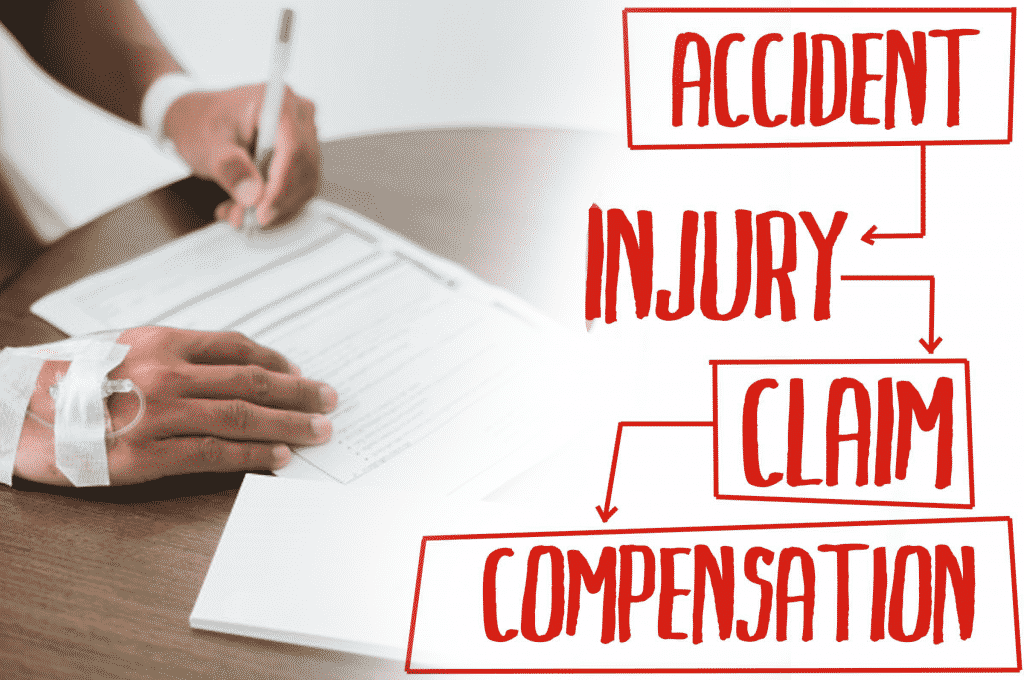Numbers don’t lie: Hospitals have a medical claim denial of 2%, while medical practices have a denial rate in the range of 5-10%. This is a significant loss since a 1% write-off for a 300-bed hospital is an average loss of $2 million or more a year.
83% of Physician Practices recognize that slow payment from high-deductible plan patients is their top collection challenge
Source: Black Book™ RCM Survey
It takes a lot of time and effort to research and resubmits denied claims.
The longer they wait to resubmit denied claims, the more likely it is that they will not recover the whole amount from the insurance payer; or worse, they will not get reimbursed at all. That’s why medical practices prefer to outsource the insurance verification process to companies that are specialists in eligibility verification.
Thus, a claim denial management approach is essential for swiftly identifying, resolving, recovering, and preventing denied claims in insurance verification.
Indeed, it might never be possible to bring down eligibility denials in medical billing to 0% but reducing insurance eligibility rejections and denials by even a fraction from your current percentage will have a successful impact on your revenue numbers.
Understanding the common causes of health insurance denials may help pinpoint the medical claims processing problems and find ways to streamline them for healthier outcomes.
what are 5 Reasons an Insurance Claim Might be Denied for Payment.
To better understand why claims get denied, here are the 5 Reasons an Insurance Claim Might be Denied for Payment.
- Missing Information
- Duplicate Claim or Service
- Claim already adjudicated
- Service Not Covered by an insurer
- The time limit for claim submission has lapsed.
1.Missing information
Contributed to 61% of initial medical billing denials and 42% of denial write-offs
Medical claims must get submitted within a certain number of days of service, according to most payers. This timeframe covers the time it takes to revise denials, as well as whether you automated the review (e.g., a system checking for faulty coding or other errors) or complex (e.g., licensed medical experts assessing if the treatment was covered and was reasonable and required).
Correction of inpatient medical coding errors, which accounted for 81 percent of complex claim denials in the fourth quarter of 2015, can result in delays that cause medical bills to be late. When medical claims are approaching their deadline, workflow procedures should warn personnel.
2. Duplicate claim submission
Duplicate claim submission is surprisingly common.
Duplicates or claims resubmitted for the same encounter on the same date by the same provider, for the same beneficiary, and the same service items are among the leading causes of medical billing claim rejection, accounting for up to 32% of claims.
3. Denial code CO 97 or claim already adjudicated
Denial code CO 97 or claim already adjudicated is when service is already included in another claim/payment which was already adjudicated. This error emerges when benefits for one service get included in a payment or allowance for another treatment or already adjudicated procedure.
4. Service not covered by an insurer
Service not covered by an insurer occurs because of failure to check a patient’s benefit plan or call the insurer before administering the service.
Checking data in the insurance eligibility response or calling the insurer before delivering services might help minimize medical billing denials for operations not covered under the patients’ existing insurance programs.
5. The time limit for claim submission has lapsed.
Payers include the time to rework rejections within their specified days of claim service. Health provider’s workflows must alert staff when the time limit is approaching red.
Medical claims must get submitted within a certain number of days of service, according to most payers. This timeframe covers the time it takes to revise denials, as well as whether you automated the review (e.g., a system checking for faulty coding or other errors) or complex (e.g., licensed medical experts assessing if the treatment was covered and was reasonable and required).
Correction of inpatient medical coding errors, which accounted for 81 percent of complex claim denials in the fourth quarter of 2015, can result in delays that cause medical bills to be late. When medical claims are approaching their deadline, workflow procedures should warn personnel.
The challenges providers have with a reduced denial average is often to do with the inability to track denial statistics, using manual processes, and a resource-intensive process of appealing claims.
How insurance eligibility verification reduces claim denials
Most claim denials are because of errors in proper verification before services were provided.
Health insurers have different variations to deny claims, and understanding these differences is an essential aspect of an efficient insurance eligibility verification system.
90% of claim denials are avoidable, and two-thirds are recoverable
Despite being relatively avoidable (though time-consuming) to prevent medical claims denial, many health providers are skipping a detailed insurance verification process. They are reactive rather than proactive, in short, waiting for pushback from the payers to rectify errors and resubmit.
A step-by-step insurance eligibility verification process has a two-fold advantage.
- The first is to avoid claim resubmissions and rejections.
- The second benefit is that it speeds up collections through clean forms.
A streamlined patient eligibility eligibility verification model should include these steps.
Step 1: Once an appointment is scheduled, the patient’s documents must be received. Entry of demographic details and verification begins.
Step 2: Verify coverage benefits with both the secondary and primary insurer. Verification is done through calls to the insurer and insurance portals
This includes looking into various heads like payable benefits, co-pays, co-insurance, deductibles, patient policy status, type of plan and benefits, plan exclusions, lifetime maximum, etc.
Step 3: Get authorization of the claim from the insurer.
Step 4: Open communication modes with the patient to collect additional information needed for claims submission forms
Step 5: Scrub patient and insurance information to rule out errors and ensure completeness. Enter the results into the system so that information can be updated into the hospital’s revenue management system or the practice management system
The final report will have all the insurance benefits, Member ID, Insurance start and end dates, Co-payment details, etc.
While this seems simple enough, it’s not. When this is extrapolated across hundreds of patients, the complexity multiplies.
Many hospitals don’t invest in the technology and additional staff to manage denials efficiently. Also, keeping up with constantly changing regulations is never easy. The challenges for practices are different; physicians are pulled between patient care and administration; neither do their front desk have the skills to ensure payments go through with no hitches.
Denial Tracking and Management
Losing track of refused claims might become a big problem in the future since they tend to accumulate over time. It becomes complicated to keep track of denied claims if there is no systematic structure in place. However, new tools and technologies assist hospitals in managing and monitoring denials that need to get addressed.
Preventative Denial Maintenance
Staying on top of the denial management process’ development and success are critical since it allows organizations to understand which aspects are succeeding and which ones require improvement. When it comes to underpaid claims, you must document all wins and losses. Ultimately, the goal is to use existing data to increase the efficiency of an organization’s denial management approach.
Strategies to Work Denials
Establishing an efficient denial management procedure also requires identifying the sorts of denials most typical in an organization. Each kind of denial may appear to be a minor issue at first, but when firms track and analyze these tendencies, serious difficulties within their businesses may emerge.
Following the categorization of denial grounds, you can establish a tracking and reporting method for an implementation to determine the following pertinent information:
- Top denial categories affecting the organization
- Top payers affecting the organization in terms of claims dollars denied
- Top departments or service areas affected by denied claims
Why Outsourcing is the Most Cost-Effective Strategy
For cross-departmental teams in an organization, outsourcing speeds up the repair and re-submission of denied claims. An intelligent workflow engine uses client-specific logic to efficiently distribute denied claims that need to be resubmitted to the appropriate departments and team members while also keeping track of actions undertaken for every claim.
Analyzing the various reasons for claim rejection can help you improve long-term efficiency and save money. Organizations can easily assess remittance advice, revealing prospects for effective denial avoidance as outsourcing service providers have incredibly effective, internet-based denial management in medical billing.
Moreover, outsourcing opens a wealth of advantages, including:
- Provide a single, on-demand view for all users to manage all aspects of claim denials and re-submissions.
- Manage claims denials from all payers.
- Reduce first denial rates to less than 4%, which is the industry standard.
- Provide key trending reports to assess the impact of process improvements.
- Ensure the meeting of all HIPAA technological security and privacy requirements.
- Provide high-quality services at a low cost with a short turnaround time.
- Access to world-class talent.
Conclusion
The Outsourcing Denial Management Process ultimately allows organizations to reduce costs without compromising quality service delivery among their stakeholders.
When organizations outsource denials management, they gain access to a pool of skilled experts with substantial knowledge and experience. Expert areas include everything from claim submission and appeals and standard coding regulations to NCD and LCD regulations. This need for experts prevents denials and guides individuals in avoiding similar events in the future.
If you are making a decision to outsource outsource insurance eligibility verification services, here are the crucial questions you should have the right answers to before hiring the right company
Outsourcing insurance eligibility and benefits verification process in medical billing to experts like iTech Data Services ensures that you have access to a team of professionals. With expertise through thousands of patients, they already know the red flags to look out for, the information they need, and what medical services are excluded from different plans. This ensures less rework and faster billing cycles. Over time, pattern recognition for claim denials will make visible the core reasons for claim denials.
To know more about our insurance eligibility verification and prior authorization expertise, talk to one of our experts right away.




